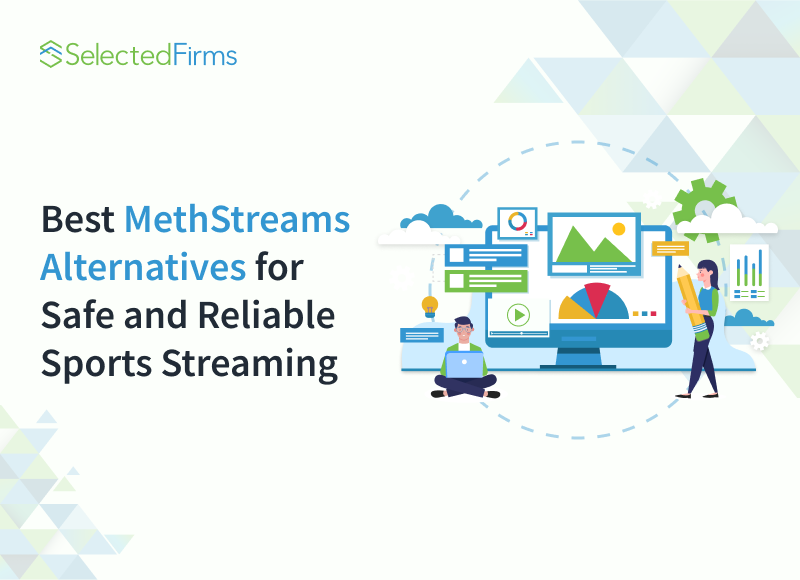Table of Contents
Discover what an SEO crawler is and its essential role in optimizing your website. Learn how it enhances visibility and improves search engine rankings.

Ask any webmaster about their ultimate goal, and they’ll tell you it’s all about getting their web pages the top spots on search engines.
We get it. What could be better for a website than its pages on the first page of Google search results? After all, greater visibility would certainly mean more clicks.
But how does this work?
Is there a specialized tool that can simplify this complex and time-consuming job?
Of course, there is your friendly SEO crawler (We’re not talking about Spiderman)!
Intrigued? Let’s learn more about an SEO web crawler and how it can boost your digital marketing outcomes.
What Is an SEO Crawler?
An SEO website crawler is an online bot that peruses the different pages of a website to learn more about its content and relevance. The information these bots gather is then used to provide the best answers to search engine queries users search for.
SEO crawlers are also known as search engine spiders. When crawling a web page, these bots or spiders also download it and extract any links to discover other pages.
Crawlers regularly visit these website pages to check for changes to the content since they were last crawled. If a change is detected, the search engine updates its index accordingly.
If you’re wondering what “index” means, it refers to the database of web pages that a crawler discovers. In that sense, a search engine like Google will pull its search results from an index, akin to a library created by its crawler, Googlebot.
So, the next time you search for something on Google, know that it’s not throwing random results at you—what you’re seeing isn’t being generated suddenly. Instead, the search engine is skimming through its index and presenting the best possible results.
This brings us to our next question.
How Does Web Crawling Work?
The interesting thing about crawlers is that they’re constantly looking for new URLs to index. But how do crawlers do this? We’ll explain.
When Googlebot, for instance, visits a website, it uses its internal links (the clickable text links in blue) to identify additional pages on that site. With every page Googlebot crawls, it gathers more information to add to its index.
To begin with, it visits the website and downloads the robots.txt file, which specifies what pages search engines should and shouldn’t crawl on the website. This file may also contain information about sitemaps, a list of the URLs the site wants the bot to crawl.
It doesn’t end here.
SEO website crawlers employ multiple algorithms and guidelines to decide the frequency of re-crawling a page and how many pages on a website should be indexed. For instance, a page that is modified often might be crawled more frequently than one that’s rarely changed.
Still, wondering if SEO crawler tools are worth the hype? Read on to get your answer.
Why You Should Invest in an SEO Crawler
It’s no secret that the modern digital landscape is cutthroat, and a well-optimized website can provide webmasters with tremendous leverage. This is where using an SEO crawling tool can pay off heavily. SEO website crawlers can improve website performance, boost visibility, and engender better user experiences.
Here are a few compelling reasons why website owners need an SEO crawler.
1 - Detect and Address Technical Issues
One big reason websites fail to make it to the first page of search engine results is the technical issues that hinder their performance. It is, therefore, crucial to thoroughly scan the website’s architecture and code and unearth common technical issues such as:
- Duplicate content
- Broken links and redirects
- Server errors
- Issues with website's XML sitemap
- Design problems
- Missing or poorly formatted meta tags
Addressing these issues promptly can help website owners enhance the overall user experience. For example, identifying and removing broken links can smooth navigation and result in superior website performance.
2 - Improve Website Visibility
Crawling and indexing web pages is a sure-shot way to bolster the website’s visibility. In essence, SEO crawlers assist search engines with identifying and ranking websites in an organized manner. Hence, the spiders can do their job more effectively, boosting visibility. The best part? Once your website gains higher visibility, it will automatically attract more organic traffic!
3 - Keep a Check On-Page SEO
The chief purpose of on-page SEO is to optimize each web page to rank higher and attract more traffic. An SEO crawling tool can prove highly advantageous here. It can help you analyze crucial on-page elements like meta descriptions, title tags, image alt texts, headers, and so on for potential optimization. Once these elements are optimized with the relevant keywords, your website will become much more appropriate to users and search engines.
4 - Enhance Site Structure and Navigation
Only a well-structured website can ensure easy navigation for crawlers and humans. You can use a proven SEO website crawler to achieve this. It’ll help you organize your website content logically through clear menu structures and hierarchical page architecture. You’ll also be able to generate user-friendly (read: concise yet descriptive) URLs to improve the crawling process.
5 - Monitor Page Speed
What would you do if you visited a website that took ages to load? Close it and move on to the next fast-loading one, right? This is why page speed is a critical aspect of both SEO and user experience. Slow-loading pages mean higher bounce rates and dismal search engine rankings. However, an SEO crawler can help by analyzing your site’s loading times and providing insights into the reasons behind the delays. You can boost your site’s speed and performance by simply addressing these factors.
6 - Boost Mobile-Friendliness
Mobile-friendliness has become non-negotiable, with people increasingly using their mobile devices to visit websites. You can use a good SEO crawler to evaluate your website’s mobile friendliness while uncovering responsive design issues or configuration errors. Upon sorting these issues, your site is bound to perform better on mobile devices with higher engagement.
7 - Identify Duplicate Content
Duplicate content can confuse search engines, which, in turn, can hurt your website’s ranking prospects. A dependable SEO crawling tool can help pinpoint content on your website – whether in the page content, meta titles, or even URLs. Removing duplication means users can trust your website for its unique and useful information. As a result, its credibility and search engine rankings only stand to improve.
8 - Track Website “Health”
A robust SEO crawler helps you continuously monitor your website’s health. It helps prevent potential issues and maintain optimal website performance. All you need to do is schedule regular crawls, and all your new content or the latest changes will be analyzed and optimized to perfection.
What Makes an Effective SEO Crawler Tool?
Now that you’ve understood how an SEO crawler tool can be helpful, we’re sure you want to start reaping its benefits. But how do you choose an SEO crawler you can count on? Mentioned ahead are a few key features you want to consider.
1. Depth and Speed
Crawl depth refers to how deep the crawler can dig within the website’s pages. By doing so, the crawler ensures all important pages are indexed. Remember, limited crawl depth can result in missed pages or critical content on the website.
Apart from depth, consider crawl speed. The faster the crawl, the quicker the analysis and updates will be. Slow crawling can lead to delays in identifying and rectifying technical issues, which could spell disaster for your website’s performance.
2. In-Depth Analysis
You want to go with a crawler that does the hard work and helps you save time and effort. It should be able to analyze important website crawl data, such as pages and categories, along with the parts of the site, how often they were crawled, and the information received from those pages.
Additionally, it should be able to identify and minimize crawl budget waste (depending on the number of pages crawled) while ensuring Googlebot visits all the crucial pages.This may involve reducing the number of errors and broken links, enhancing internal linking, no-indexing duplicate content, and so on.
Features like fake bot detection, real-time log streaming, and pre-set issue reporting can immensely help. You can look forward to enhanced crawlability, more comprehensive indexation, superior user experiences, and increased organic traffic. Pick a tool that integrates flawlessly without log limits and doesn’t pinch your pocket.
3. API Access and Integrations
Integrations and API access enable the SEO crawler to work harmoniously with other tools. This, in turn, aids in easier website optimization. You should be able to easily import and export data between the SEO crawler and other programs. It should also allow you to merge data from multiple platforms for more insightful decision-making.
Your crawler should be capable of automating tasks by connecting with your SEO and analytics systems through API access. This will help you automate data retrieval and create custom reports, saving time and energy.
Moreover, it should be able to work with other analytics tools to assess website performance parameters. So, suppose you decide to integrate your SEO crawler with Google Analytics, for instance. In that case, you should be able to view all data related to website traffic trends while also discovering unexplored avenues.
4. Reporting Capabilities
Your SEO crawler’s reporting capabilities should help you monitor and evaluate your website’s performance on search engines. You should be able to track metrics like keyword rankings, organic traffic, and such. This data can be utilized to make improvements to and optimize your website. Through these capabilities, you should be able to measure the performance of your SEO efforts while making necessary and timely adjustments.
Conclusion
If you own a website and want to improve its online presence, using an SEO website crawler can be a great starting point. You can use it to derive comprehensive insights into your website’s structure, content, and overall performance.
This tool helps your website avoid and overcome technical issues that could otherwise hamper its visibility and rankings on search engines. Regularly using the SEO crawler tool will ultimately help you drive more organic traffic.
Haven’t already invested in an SEO website crawler? Don’t wait. It’s always a good time to start fortifying your website for its long-term success. Make sure you build a website that impresses not only search engines but also its visitors.
Recent Blogs
12 Best MethStreams Alternatives for Safe and Reliable Sports Streaming in 2026
-
18 Dec 2025
-
12 Min
-
36
Real World Digital Transformation Use Cases in Real Estate, Tech, and Recruiting
-
17 Dec 2025
-
6 Min
-
143








